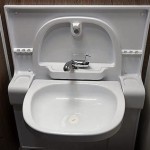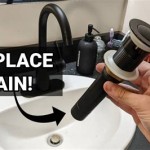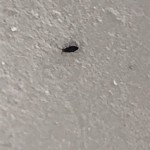How To Remove Mold From Bathroom Tile Grout
Mold growth in bathroom tile grout is a common problem, often appearing as black or white streaks, dots, or fuzzy patches. This unsightly growth can be more than just an aesthetic issue; mold can also pose health risks, particularly for individuals with respiratory problems or allergies. Fortunately, removing mold from bathroom tile grout is achievable with the right tools and techniques.
Before embarking on mold removal, it's essential to understand the underlying causes of its formation. Moisture is the primary culprit, as mold thrives in damp environments. Poor ventilation, leaking pipes, and insufficient drying after showers can all contribute to moisture buildup. Additionally, the porous nature of grout makes it susceptible to mold growth, providing a suitable surface for spores to adhere and proliferate.
To effectively remove mold from bathroom tile grout, a multi-pronged approach is recommended. This involves cleaning the grout to remove visible mold, treating the affected areas with an anti-fungal solution to prevent regrowth, and addressing the underlying causes of moisture buildup to prevent future occurrences.
Cleaning the Grout
The first step involves cleaning the grout to remove visible mold. This can be achieved using a variety of methods, including:
- Commercial Mold and Mildew Cleaners: Many commercially available cleaning products are specifically designed for mold removal. These products typically contain bleach or other strong chemicals that can effectively kill mold spores. When using commercial cleaners, it is imperative to follow the manufacturer's instructions carefully, ensuring adequate ventilation and wearing protective gear, such as gloves and a mask, to prevent skin and respiratory irritation.
- Baking Soda Paste: A paste made from baking soda and water can be a safe and effective solution for removing mold from grout. Apply the paste directly to the affected areas, let it sit for several minutes, then scrub with a stiff-bristled brush. Rinse thoroughly with water.
- Hydrogen Peroxide: Hydrogen peroxide is another natural cleaning agent that can be used to kill mold. Apply undiluted hydrogen peroxide directly to the grout, let it sit for 10 minutes, then scrub with a brush and rinse thoroughly.
Regardless of the cleaning method chosen, ensure that you scrub the grout thoroughly to remove all traces of mold. Pay particular attention to corners and crevices where mold tends to accumulate. After cleaning, the grout should be rinsed thoroughly with water to remove any cleaning residue.
Treating the Grout with Anti-fungal Solution
Once the grout is clean, it is essential to apply an anti-fungal solution to prevent mold from regrowing. Several commercial anti-fungal products are available, typically containing a combination of bleach and other antimicrobial agents. These products can be applied directly to the grout, following the manufacturer's instructions. Alternatively, a diluted solution of tea tree oil or borax can be used as natural anti-fungal agents. Apply the solution liberally, ensuring complete coverage of the grout.
Allow the anti-fungal solution to dry completely before using the shower or tub. For best results, repeat this treatment every few weeks or as needed, depending on the severity of the mold problem.
Addressing Moisture Buildup
While cleaning and treating the grout addresses the visible mold, it is crucial to address the underlying cause of moisture buildup to prevent future occurrences. Several measures can be taken to improve ventilation and reduce moisture levels in the bathroom, including:
- Proper Ventilation: Ensure adequate ventilation by using an exhaust fan during and after showers. Run the fan for at least 30 minutes after showering to remove excess moisture from the air.
- Leak Detection and Repair: Examine pipes and fixtures for leaks, and address any issues promptly. Leaking pipes can contribute significantly to moisture buildup and create a breeding ground for mold.
- Drying After Showers: After showering, dry the walls and floor with a towel, paying particular attention to the grout lines. This simple habit can help prevent moisture from accumulating and promoting mold growth.
- Regular Cleaning: Regularly clean the bathroom to prevent mold from gaining a foothold. This includes weekly cleaning of the shower and tub, as well as monthly deep cleaning of the grout lines.
By addressing these underlying causes, you can significantly reduce the risk of mold growth in your bathroom, creating a healthier and more aesthetically pleasing environment.

How To Clean Mold In Shower Grout Tips And Tricks Certified Care

How To Remove Mold From Shower Caulk Or Tile Grout Fabulously Clean

How To Clean The Grout Between Your Wall Tiles And Revamp Mouldy Mastic

How Do I Remove Black Mould From Shower Floor

Black Mold In The Shower How To Clean It Kitchen With Matt

What Is The Best Way To Clean Shower Grout Mold Anita S Housekeeping

How Can I Clean Mildew From Grout Puroclean Hq

Cleaning Mrs Hinch Fans Share Easy Ways To Clean Tile Grout Express Co

How To Clean Grout Cleaning Stains

Is There A Way To Remove Mold From Grout Hometalk
Related Posts







